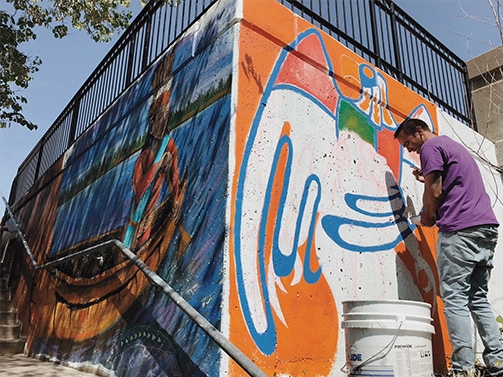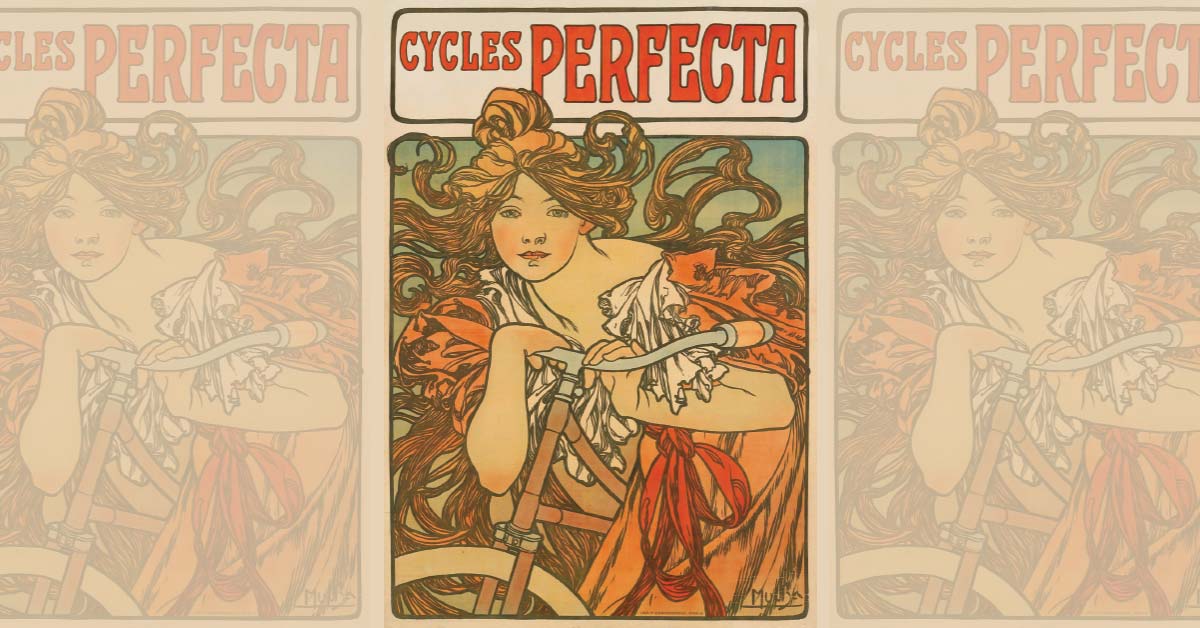A typical day in the life of Miranda Krajniak involves an Uber through the stop-and-go traffic on Monroe Center Street, asking her driver what they think of the bright, yet stormy mural of an angelic, silver woman outside the window. After giving their full opinion, the driver learns exactly who their passenger is: the executive director of the Urban Institute of Contemporary Art, and she has been on the forefront of most of Grand Rapids’ major street art installations over the past five years.
“I always ask my driver what they think about the murals (we pass),” Krajniak said. “These are people who are seeing things all the time, and they don't know who I am. They're not going to try to hold back.”
The feedback Krajniak receives on the UICA’s urban installations is almost all positive, and it’s often described as a beautiful burst of color in Grand Rapids’ grey weather.
“Putting public artwork up can really change the tone of this city,” Krajniak said.
Beyond beauty, the benefits of murals for the Grand Rapids community are numerous. When implemented collaboratively within the neighborhoods and businesses in the artwork’s area, urban art enhances the community’s sense of unity, creates conversation around town and transforms a bland building into an inviting, vibrant space. Murals not only become a part of Grand Rapids residents’ daily lives, but also intertwine with some of people’s most memorable moments.
“As soon as you put (the art) up, people start to create their own relationship with the work that maybe you didn't see coming,” Krajniak said. “I think one of the strangest things about putting up murals in some of these areas is how many people will shoot their weddings in front of it.”
Krajniak recalls seeing brides and grooms posing for photos in front of the art on North Division as well as behind the Grand Rapids Ballet Company, two of the UICA’s major mural installation locations.
Since the UICA recognizes the powerful effect public artwork has on Grand Rapids, the gallery has an ongoing project dedicated to large- and small-scale mural installations around the city called the Exit Space Project, headed up by PERSON. This project is the main motivator behind all of the UICA’s mural installments, including UICA Outside, the institute’s annual ArtPrize entry that commissions an artist to paint a mural during the festival. The Exit Space Project also has placed nearly 20 murals around Grand Rapids over the past seven years.
Implementing a mural through the Exit Space Project requires more than paint and brushes, though. Public art depends on an intense amount of collaboration between both the residents and businesses in the piece’s area. During a project’s planning process, the UICA collects criticism from those who will see the art every day.
“We don't want to just drop a mural on a bunch of people who don't want it,” Krajniak said. “I think the key to everything we do when we're working with the public is that we're working with people.”
Though it would be easier to bypass outside opinions and install art based on the UICA’s aesthetic and locational choices, Krajniak and the rest of the UICA team highlight that the murals “aren’t about us.” It usually takes about a year to decide on designs and employ the artists for a piece, “but to do this the right way is to do things the hard way,” Krajniak said.
The Grand Rapids community isn’t all the UICA works hard to take care of while coordinating its street art projects. The institute’s employed artists receive payment for both the planning sketches and actual installation of a mural, as well as safety insurance during their time working on a wall. Krajniak emphasizes that “no one works for free at UICA,” and compensation is essential for the Exit Space Project’s continuation.
Despite a mural’s lengthy and expensive installment process, the organization believes seeing the positive effects of public artwork in Grand Rapids is worth the effort. To Krajniak and the UICA, murals are about “putting contemporary art in front of people, where they are.”
Public art is a bonding element for urban residents, and the artwork is essential to enhancing the city’s vibrancy. Krajniak’s daily conversations with her Uber drivers are just one example of how intentionally placing beauty on buildings can enliven the city of Grand Rapids, whether the work is seen once in a while or during a daily work commute.
“We believe in art all the time,” Krajniak said.





